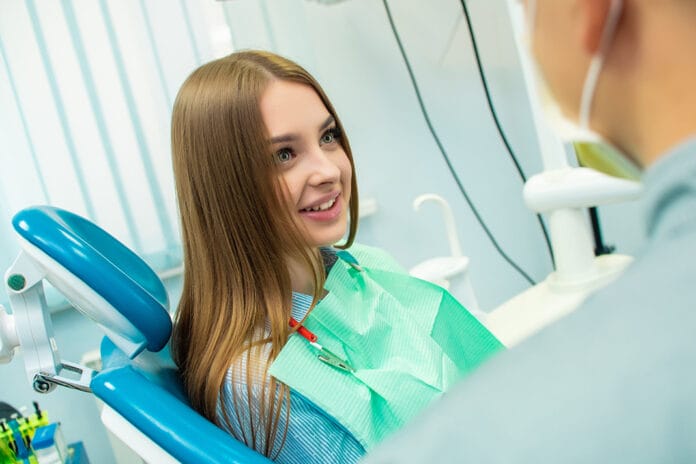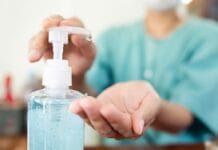No amount of time will be enough to do everything perfectly during each dental appointment. You need to make small talk with the patient, take vitals, go over health history, take radiographs, perform an oral cancer screening, record a full periodontal assessment, scale, polish, floss, teach patients how to perfect their home care, assist the doctor for an exam, schedule them for their next appointment, sterilize your room, and write your chart notes for the appointment ─ in 60 minutes or less.
Needless to say, dental appointments can be overwhelming. Every dental hygienist is going to find themselves having to rush certain steps to stay on schedule. However, I’m here to tell you one easy step that you should not overlook: Always tell patients their dental hygiene diagnosis.
Your patient has gingivitis. Tell them.
Even if it’s only localized? Yes.
Your patient has periodontal disease. Tell them.
Even if it’s just slight bone loss? Yes.
Your patient has bone loss that is non-disease related. Tell them!
Don’t Beat Around the Bush
Periodontal disease is just that, a disease! We’ve all sugarcoated periodontal disease, telling patients, “Oh, you have a little bit of bleeding, but overall, things look nice!” Or, “You just have a few of these deeper pockets underneath your gums, so make sure you’re flossing, okay?” When we make these concerns seem normal, the last thing patients are going to be is concerned.
If patients have to read through the lines of what we are telling them, there is a lot of room for misunderstanding. These inconclusive phrases we give to patients can stem from hygienists not feeling confident or empowered enough. We are always told dental hygienists can’t diagnose but are expected to diagnose regularly.
It can be confusing. Many offices still don’t give hygienists much freedom or autonomy. Keep in mind that you are the periodontal disease specialist and advocate for your abilities. We need to own that we are highly educated health care providers in our field and have the confidence to share our knowledge with our patients.
Imagine This Scenario
You go into a doctor’s office for a checkup and have some basic blood work done. The blood work shows that you have characteristics of diabetes. Your provider shares the findings, saying, “Everything’s looking pretty good. Your cholesterol levels are okay. Your blood clotting levels seem to be good. You do just have some high blood sugar, and your insulin levels are low. So, eat healthy and try to get more exercise, and you’ll be fine!”
They told you the characteristics of diabetes, but they didn’t tell you that you had a disease. You’re probably going to leave thinking that it doesn’t sound too serious and you’re going to go on with your life as normal. But no doctor or nurse is ever going to send you on your way after you’re diagnosed with a disease without telling you that you have that disease.
We should never dismiss patients without telling them about their periodontal disease either.
Be Definitive and Specific
When I often tell patients that they have periodontal disease, they have never been told so in the past (or at least in a way that stuck). I find that being specific and using the words “disease” and “infection” gets the patient’s attention.
Instead of saying, “Your gums are swollen and have some bleeding, so work on your flossing,” say, “You have gingivitis. It’s an infection in the tissue around your teeth that causes swelling and bleeding. It’s the first stage of periodontal disease. This means that if it’s not treated, it can cause the bone and tissue around your teeth to break down.” We shouldn’t sugarcoat gingivitis because we don’t want to make patients feel bad. I have found that the overwhelming majority of patients don’t actually know what gingivitis is, and they need to know if they are going to take it seriously.
The same goes for periodontitis. Tell the patient and be specific. “After measuring the depths underneath your gums and comparing with the x-rays that we took, I’ve found that you have Stage 2 Grade A periodontitis. Periodontitis is a disease caused by a chronic infection of the tissue and bone around your teeth that breaks down the supporting bone around your teeth. Stage 2 means that you’ve lost up to 3-4mm of bone around your teeth.”
If you’re not familiar with the new AAP classification system, print out tables such as this one or this one to keep in your operatory. Find high-quality patient consultation materials that are up to date on the newest classifications and terminology. We want the message to our patients to be consistent and clear, so it’s helpful if the visuals that you use have the new staging and grading classifications on them.
Let the Patient Own Their Diagnosis
I am all about making patients own their oral health. It’s too much to bear the weight of every patient’s health ─ that needs to be their own responsibility. The most you can do is give them the information they need and support them in deciding what they want to do to take care of themselves.
After giving patients their diagnosis, tell them that you are happy to discuss their options. You will want to know their thoughts on the situation and what route they see themselves taking. This final step builds trust with patients because: 1) You’re not trying to force them into anything, and 2) You value and respect their opinion and priorities.
The best part is that once patients are clear on the fact that they have a disease and their situation isn’t normal, they are most likely going to choose the best treatment.
I know that the hour we get with patients is busy, but this critical step of communicating your patient’s diagnosis takes five minutes or less and is faster at each recall appointment. It will lead to a much more proactive patient base that owns their own oral health and has a stronger appreciation for the service that you are providing to keep them healthy.












